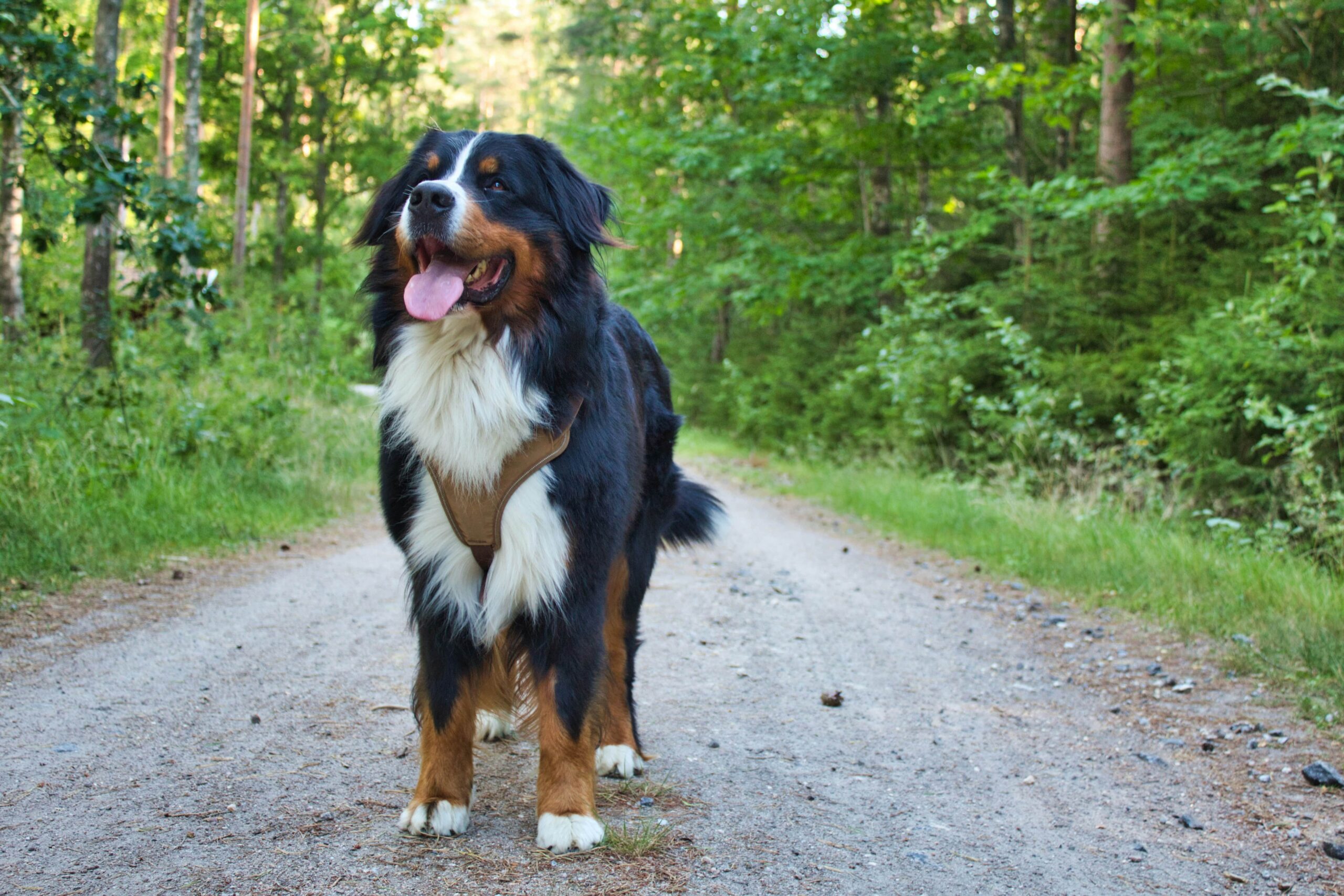Brief Overview of Bernese Mountain Dogs
Bernese Mountain Dogs, often affectionately referred to as Berners, are gentle giants known for their striking tri-color coat and friendly disposition. Originally bred as working dogs in the Swiss Alps, they are now cherished family pets around the world.
Why Bernese Mountain Dogs Make Great Pets
Bernese Mountain Dogs are incredibly loyal and affectionate companions, making them excellent family pets. Their calm demeanor and gentle nature make them great with children, and their willingness to please makes them relatively easy to train. Plus, their fluffy coat and big, expressive eyes make them irresistibly adorable!
Bernese Mountain Dog Statistics
Dog Breed Group: Working
Height: 23-27.5 inches (at the shoulder)
Weight: 70-115 pounds
Life Expectancy: 7-10 years
Bernese Mountain Dog Quick Facts
Coat: Long, thick, and tri-colored (black, rust, and white)
Club Recognition: American Kennel Club (AKC)
Ideal Owner: Active individuals or families with a love for the outdoors
Energy Level/Exercise Needs: Moderate to high energy; requires daily exercise
Space Requirements: Can adapt to apartment living with sufficient exercise
Grooming Requirements: Regular brushing to prevent matting; moderate shedding
Training: Responds well to positive reinforcement training methods
Are they good family dogs? Yes, they are affectionate and gentle with children
Tendency to bark: Low to moderate
History and Origins
Origins of Bernese Mountain Dog
Bernese Mountain Dogs originated in Switzerland and were initially bred as versatile farm dogs to help with herding cattle, pulling carts, and guarding property.
Historical Significance
They played a crucial role in the daily lives of Swiss farmers and were highly valued for their strength, loyalty, and intelligence.
Key Milestones in the Breed’s Development
- Recognized by the Swiss Kennel Club in 1907
- First Bernese Mountain Dog Club formed in Switzerland in 1910
- Imported to the United States in the early 20th century
Physical Characteristics
Size and Weight: Large and sturdy; males typically larger than females
Coat Type and Colors: Long, silky, and tri-colored (black, rust, and white)
Facial Features: Broad skull, dark eyes, and gentle expression
Unique Physical Traits: Distinctive white markings on the chest and face, sturdy build
Temperament and Personality
Bernese Mountain Dog’s Temperament: Gentle, affectionate, and loyal
Behavioral Characteristics: Calm, patient, and eager to please
Barking Tendency: Low to moderate; may bark to alert
Suitability as a Family Pet: Excellent; loves children and thrives in a family environment
Compatibility with Other Dogs: Generally good with proper socialization
Compatibility with Cats: Can coexist peacefully with cats if introduced properly
Tolerance for Solitude: Prefers to be with family; may experience separation anxiety
Adaptability to hot/cold weather: Prefers cooler climates; may struggle in extreme heat
Trainability
Ease of Training: Relatively easy; responds well to positive reinforcement
Intelligence: Highly intelligent and eager to learn
Potential for Mouthiness: Low; tends to have a gentle mouth
Prey Drive: Low to moderate; may chase smaller animals
Wanderlust Potential: Low to moderate; tends to stay close to home
Health and Care
Common Health Issues
- Hip Dysplasia
- Elbow Dysplasia
- Progressive Retinal Atrophy (PRA)
- Bloat (Gastric Dilatation-Volvulus)
- Cancer (especially histiocytic sarcoma)
Grooming Requirements
- Moderate shedding; regular brushing recommended
- Occasional drooling, especially after eating or drinking
- Fairly easy to groom; regular baths and nail trims needed
Exercise and Activity Needs
- Moderate to high energy level; requires daily exercise
- Enjoy activities like hiking, walking, and playing fetch
- Potential for playfulness; enjoys interactive toys and games
Nutrition and Diet Tips
- Feed a high-quality, balanced diet appropriate for their size and activity level
- Divide meals into two or three feedings per day to prevent bloat
- Monitor weight and adjust portions as needed to prevent obesity
Lifespan
Bernese Mountain Dogs typically live between 7 to 10 years, although some may live longer with proper care and attention.
Living with Bernese Mountain Dog
Finding a Bernese Mountain Dog Puppy
- Research reputable breeders or consider adopting from a rescue organization
- Ensure the puppy’s parents have been health tested for common breed-related issues
Preparing Your Home
- Create a safe and comfortable space for your Berner, considering their size and need for exercise
- Puppy-proof your home to remove any hazards or potential dangers
Bernese Mountain Dog Behavior in the Home
- Generally well-behaved indoors; may enjoy lounging and relaxing with the family
- May exhibit protective instincts, especially around strangers or unfamiliar situations
Exercise and Playtime
- Provide daily exercise to keep them mentally and physically stimulated
- Enjoy outdoor activities like hiking, walking, and playing in the yard
Training and Obedience
- Start training early using positive reinforcement techniques
- Consistency and patience are key; Bernese Mountain Dogs respond well to gentle guidance
Socialization
- Socialize your Berner from a young age to ensure they are well-adjusted and confident around people and other animals
- Expose them to different environments, sounds, and experiences to prevent fearfulness
Famous Bernese Mountain Dog Owners
- Sandra Bullock
- Chris Evans
- Matthew McConaughey
Frequently Asked Questions (FAQs)
Are Bernese Mountain Dogs good with children?
Yes, Berners are known for their gentle and affectionate nature, making them excellent family pets.
Do Bernese Mountain Dogs shed a lot?
Yes, they have a thick double coat that sheds moderately, especially during seasonal changes.
How much exercise do Bernese Mountain Dogs need?
They require daily exercise to stay healthy and happy, including walks, playtime, and mental stimulation.
Additional Resources
- Bernese Mountain Dog Club of America
- American Kennel Club – Bernese Mountain Dog
- The Berner-Garde Foundation
- The Bernese Mountain Dog: A Complete and Comprehensive Owners Guide to: Buying, Owning, Health, Grooming, Training, Obedience, Understanding and Caring for Your Bernese Mountain Dog by David Anderson

